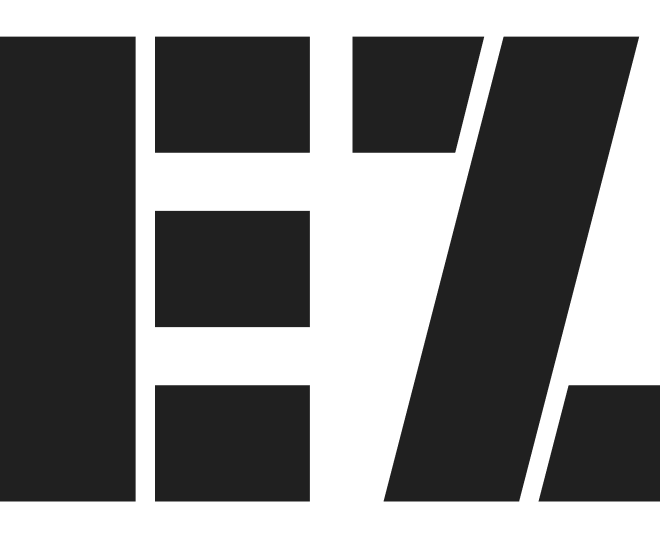Overview
The Kelly Strayhorn Theater is a local Pittsburgh theater that hosts and produces a variety of contemporary and experimental shows. In the midst of a pandemic, the theater team seeks ways to improve user engagement, community participation, donations. Our team was tasked to understand the theater problem space and then make proposals for changes.
Role
Project manager, interviewer, researcher
Timeline
Aug 2020 - Dec 2020
Methods
Client Data Analysis, Think-aloud Study, Contextual Inquiry, Affinity Mapping, Speed Dating, Experience Prototyping, Wizard of Oz
Tools
Slack, Google Drive, Excel, Mural, Figma, Zoom, Wireframes CC
Team
Jailyn Zabala, Sabrina Zhu, Steve Orchsky, Emily Zou
Design Poster
Problem
Who is KST?
The Kelly Strayhorn theater was built in 1914 in the East Liberty neighborhood of Pittsburgh. It's a thriving commercial center and bustling urban marketplace in a historically black neighborhood. Our project is focused on helping the theater pursue the mission of bringing diverse communities together through creative expression, especially in the remote environment.
Key Questions
1. How might we increase participation and donations to the Kelly Strayhorn Theater?
2. How might we encourage people to engage with others unlike themselves in order to create shared understanding?
3. How might we transform the physical theater experience into a shared online experience?
2. How might we encourage people to engage with others unlike themselves in order to create shared understanding?
3. How might we transform the physical theater experience into a shared online experience?
Research & Insights
A mix of qualitative and quantitative methods were used to discover, learn, and evaluate insights. In general, the research went from taking a look at the context and broad problem space to narrowing down on one solution that can be effective.
Background Research
Every team member conducted background research that included literature reviews, domain research, and browsing through KST websites. We did this to understand the context of KST programs, stakeholders, theater-goers, and business logic. I made a stakeholder map and customer journey map of the traditional KST experience.
Data Analysis
Using Excel, our team studied past Kelly-Strayhorn data on audience and attendance. We looked for trends that could help us develop a solution that borrows strategies from previously successful shows. We divided the data analysis so that each team member produced a chart. I produced the count for the types of shows that people were the most interested in. In general, we discovered that most first-time attendees discovered events through word-of-mouth, which means that people going to shows often know someone else going. This means we should gear our content to foster community. In addition, music and dance are the most popular events, so if we choose to develop content, having elements of music and dancing would be likely to succeed. Furthermore, Stacyee Pearl had some of the most success for attendance. This means our next steps should be to borrow elements of engagement from Stacyee Pearl to retain a bigger audience.
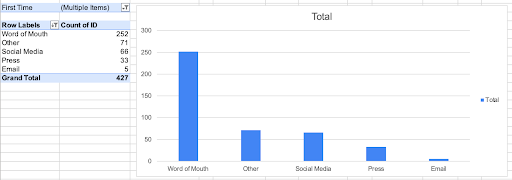
Word of Mouth is the most popular form.
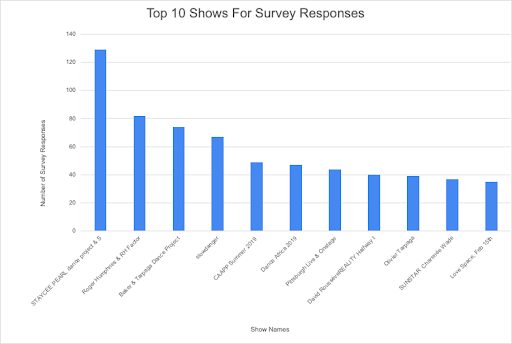
Stacyee Pearl had the most survey responses.
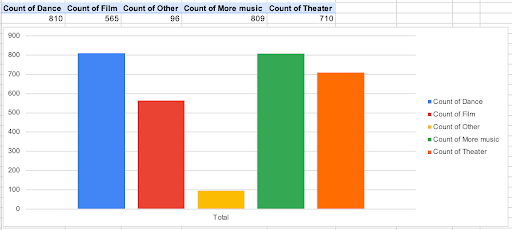
People are most interested in Dance & Music
Think-Aloud
One big entry point to the discovery of KST and its content is through it's website. We were interested in learning about how users engage with the website and what they pay attention to. We conducted 4 think-aloud sessions with participants to navigate around the KST website, with each person being a recruiter for one participant, a moderator for another participant, and a facilitator for another. Then we went through to conduct usability findings. There were three tasks that we wanted the person to do:
1. Find an event that you would be interested in attending
1. Find an event that you would be interested in attending
2. Choose a restaurant partnered with the theater that you would like to eat at before a show.
3. List two ways that you can help the theater.
Through these tasks we found that:
3. List two ways that you can help the theater.
Through these tasks we found that:
1. The website under-emphasize online registration. For example, no participants could find how to register for an online event. Perhaps one solution is to create a clear online ticketing system, button, or call-to-action to register for online events.
2. Users could not find a way to support the theater. Some participants found the donation tiers too high for their personal budgets. In addition, they wanted some suggestions on how to support in non-monetary manners. A solution for this could be conducting more research on the minimum and maximum people are willing to donate and then implementing new donation tiers.
3. Partnerships with the theater are also under-displayed. While the participants saw that there were business partners they found it hard to find information about these partners. Once participants did find partnering restaurants for example they were very interested in finding out more and discussed them thoroughly.
2. Users could not find a way to support the theater. Some participants found the donation tiers too high for their personal budgets. In addition, they wanted some suggestions on how to support in non-monetary manners. A solution for this could be conducting more research on the minimum and maximum people are willing to donate and then implementing new donation tiers.
3. Partnerships with the theater are also under-displayed. While the participants saw that there were business partners they found it hard to find information about these partners. Once participants did find partnering restaurants for example they were very interested in finding out more and discussed them thoroughly.
We would recommend to update the registration system so that finding events is less confusing. In addition, include non-monetary ways to contribute to the theater to increase types of engagement with diverse populations. Lastly, we recommend to display partnerships more and that the theater use them to increase engagement and revenue.

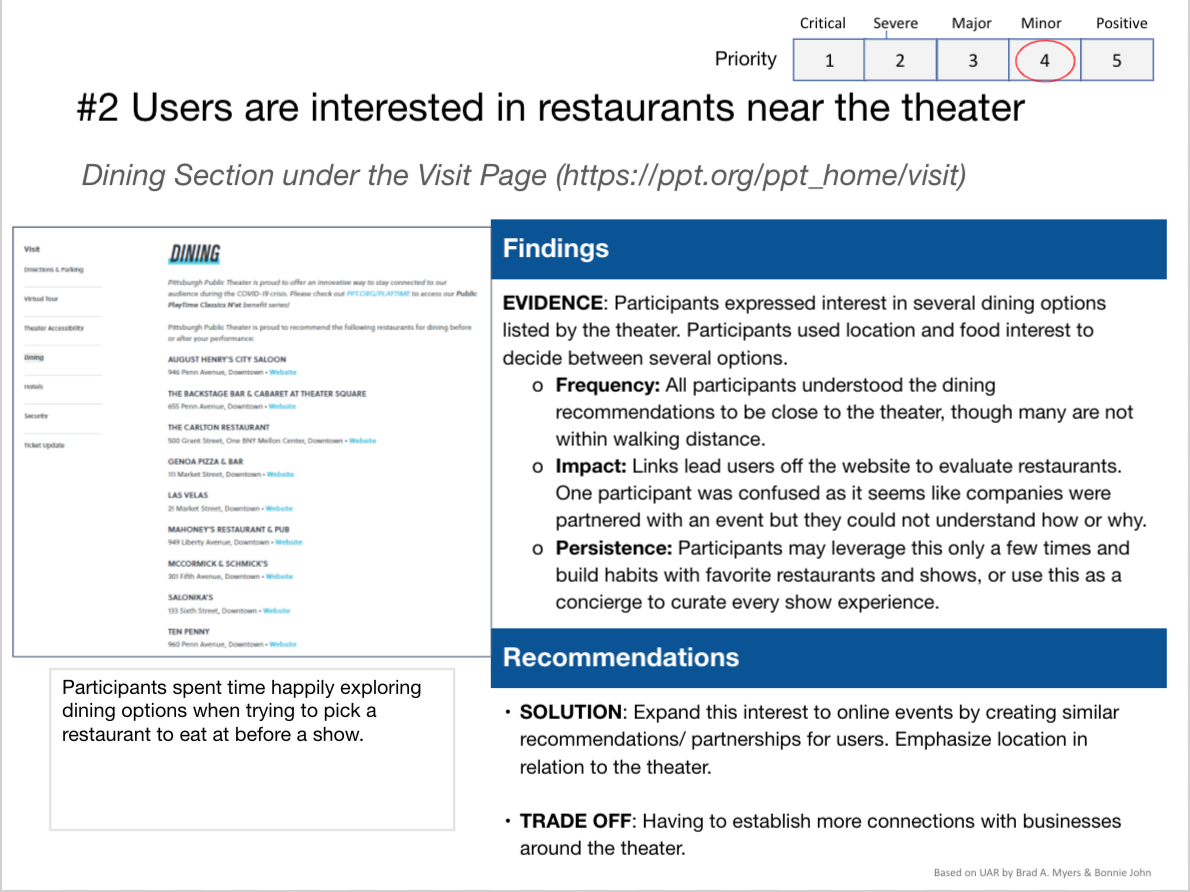
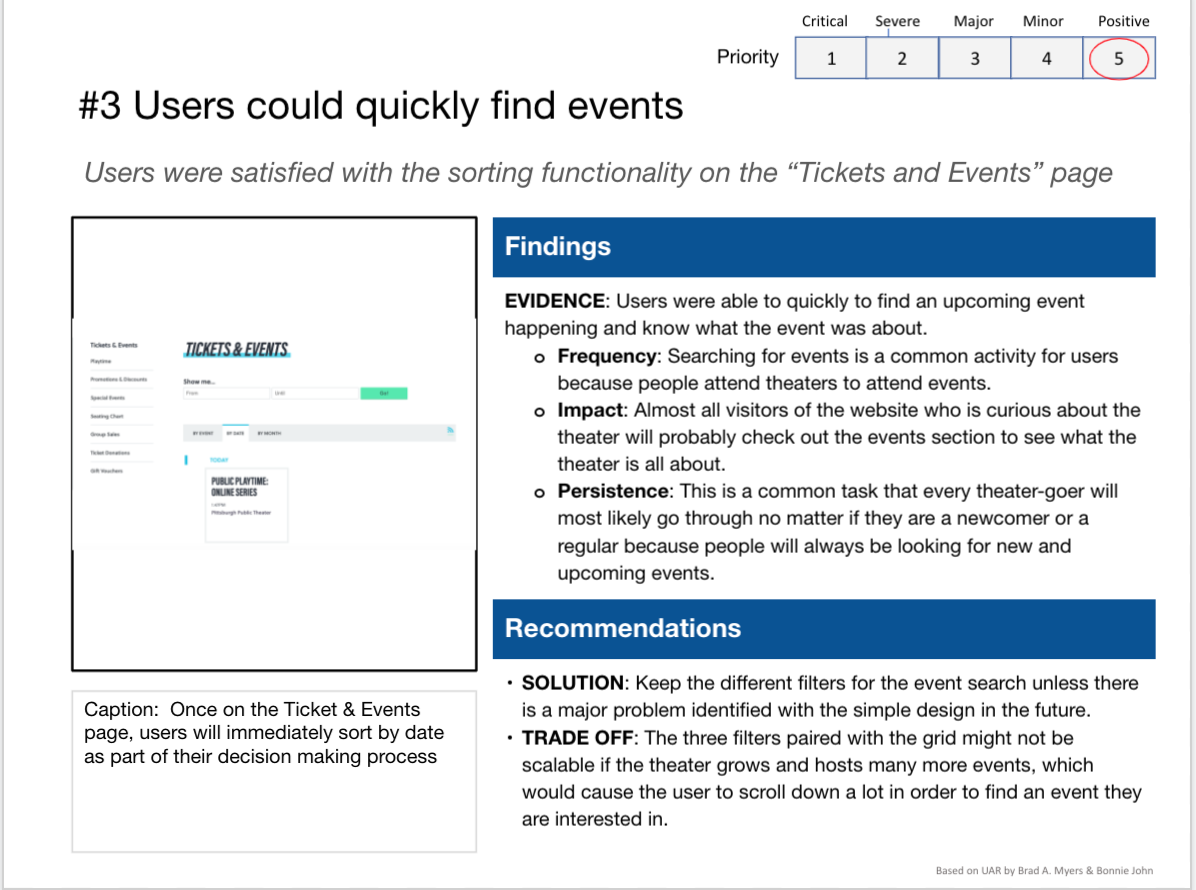

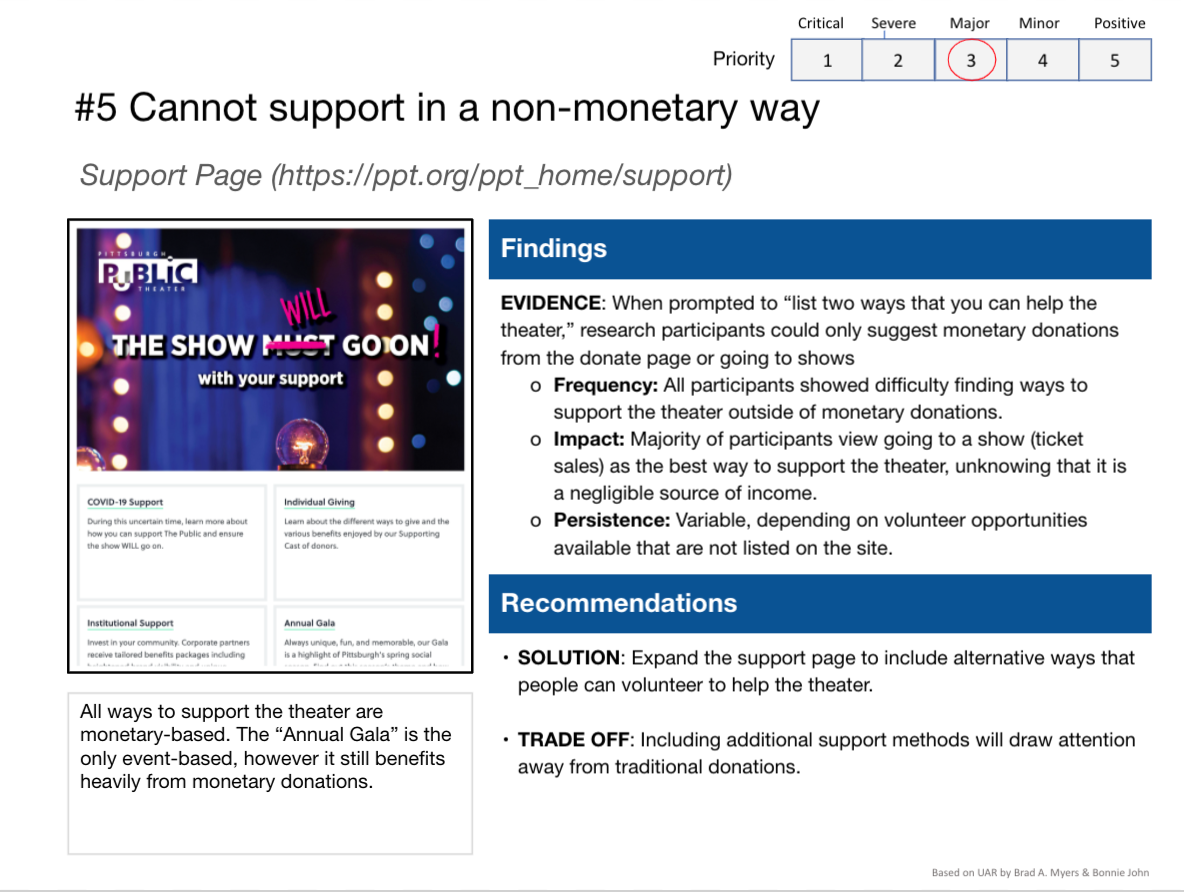



Contextual Inquiry
Then our team moved on to investigate how users engage with digital content to make remote content more engaging. Our team wrote interview protocols and then conducted 4 remote contextual inquiry sessions over Zoom as moderator for one session and as a facilitator for another. We would study participants on how they consume content for an hour as they browsed through the digital media of their choice. After that we held 4 interpretation sessions and conducted affinity mapping with the insights.
Overall, we learned that:
1. Users prefer to engage with media that they can enjoy flexibly. People like to have flexibility in their routine and their entertainment. Since theaters are traditionally are done in-person in strict time frames rather than online, this could be a potential opportunity for more of a variety for pre-recorded events at different times for different demographics.
2. Users have rituals around media and how they find them. They enjoy knowing what sort of content they will be consuming and use various means to to select their media, such as relying on creators they already know and love, using the site’s algorithms, friend recommendations. Therefore, giving an informative preview for a show so that users know exactly what they will be watching is key.
3. Users enjoy enhancing their experience with other people and things. This suggests that there are ways we can leverage social aspects to make events more engaging.
2. Users have rituals around media and how they find them. They enjoy knowing what sort of content they will be consuming and use various means to to select their media, such as relying on creators they already know and love, using the site’s algorithms, friend recommendations. Therefore, giving an informative preview for a show so that users know exactly what they will be watching is key.
3. Users enjoy enhancing their experience with other people and things. This suggests that there are ways we can leverage social aspects to make events more engaging.
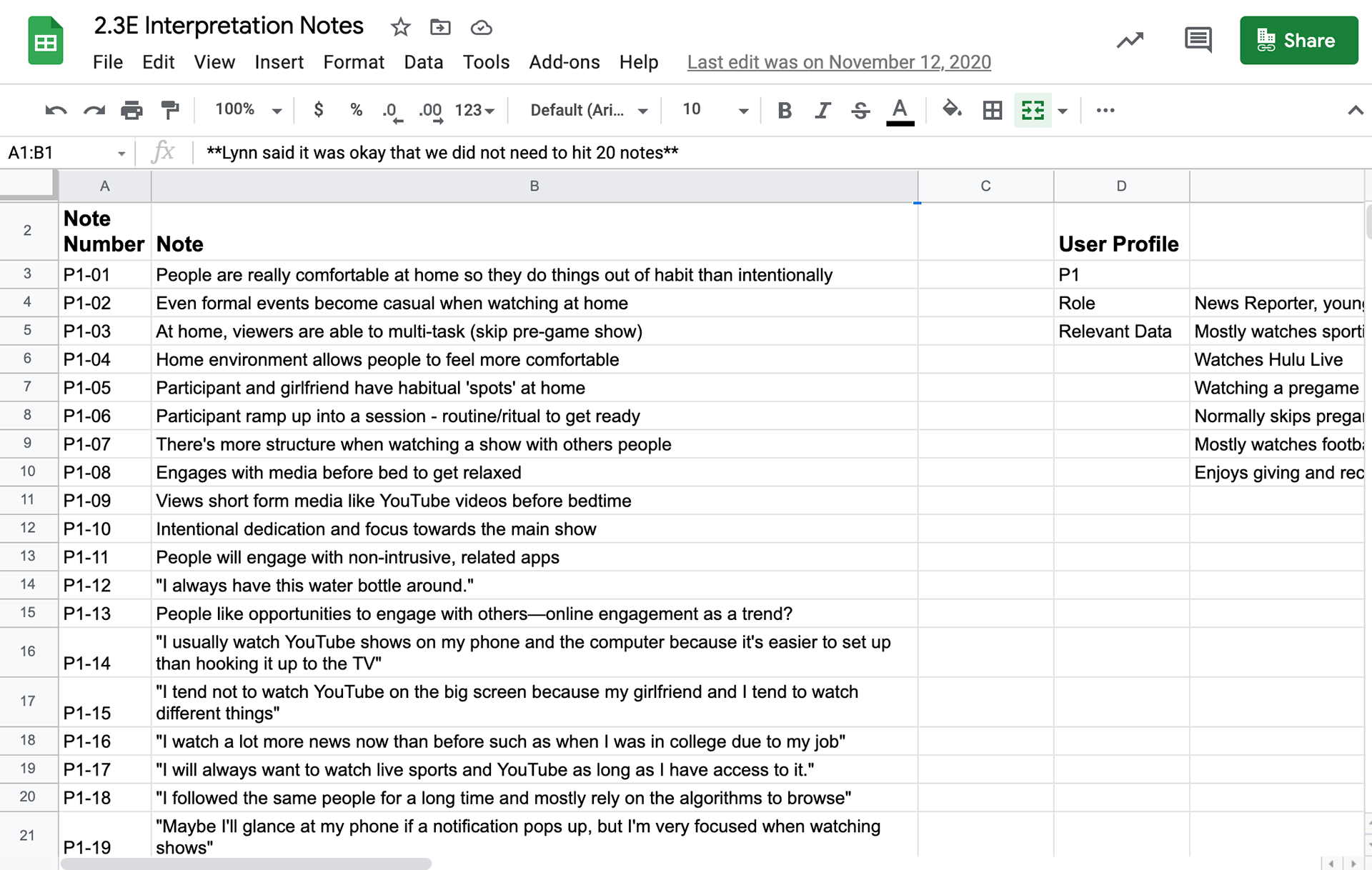
Synthesizing sessions
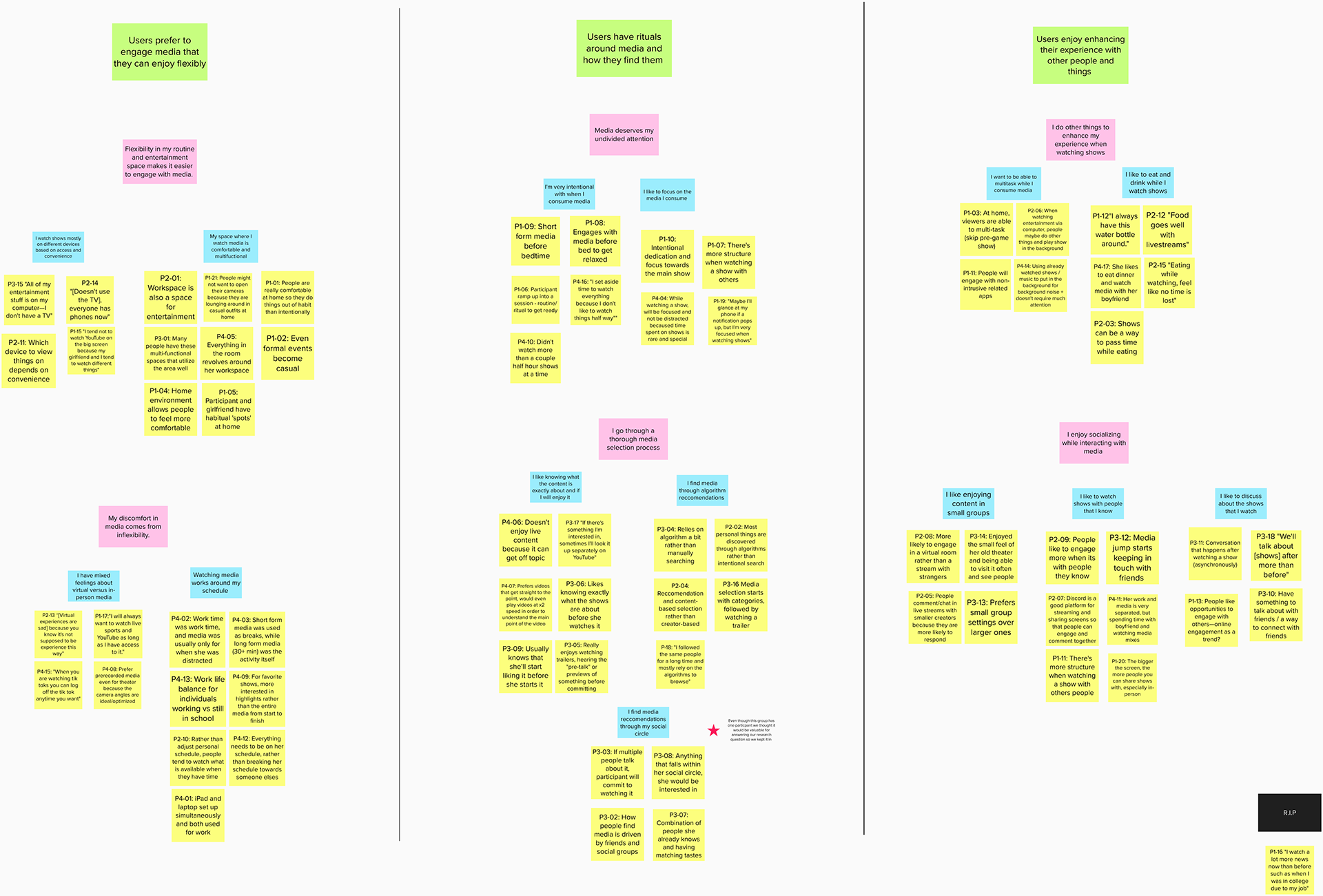
Affinity Mapping
Speed Dating with Storyboards
Once we figured out what are the most important factors for engaging audiences from previous research, we used speed dating with storyboards with 4 more participants to uncover and validate these insights:
1. Shows are a bonding experience, but elevating that experience doesn’t necessarily have to do talking
2. Previews, titles, and descriptions are the main way people find out and decide on watching shows
3. People will multitask during shows and enjoy the freedom of controlling their time
2. Previews, titles, and descriptions are the main way people find out and decide on watching shows
3. People will multitask during shows and enjoy the freedom of controlling their time
After the session, we ranked the interest of participants of each storyboard to find the most welcomed and least welcomed ideas through averaging the ranking scores. We found that most participants have a need to connect with others and find out more about shows. In addition, we discovered some misconceptions that users may have. For example, users miss the feeling of going to event and energy rather than actually interacting with people but not everyone wants to interact. The needs that got validated were:
1. Bonding with others and finding out about shows were the top needs that arose.
2. People resonated with finding out shows; we thought people already had that set in stone
3. There is till not a lot of willingness to compromise the media time
2. People resonated with finding out shows; we thought people already had that set in stone
3. There is till not a lot of willingness to compromise the media time
Knowing these validated needs, we brainstormed some specific design opportunities:
- Interest in trivia and low-effort games during shows
- Make better use of Zoom breakout rooms
- Expand tags, descriptions and previews (images are good because they won’t give as much spoilers but you can get a general sense)
- Strong social media plus appealing trailers and teaser images could draw people in
- Rent VR sets for show experience to create more immersive experiences
- Elevating the experience of the participant at home, so we can introduce more things date-night-boxes
- Make better use of Zoom breakout rooms
- Expand tags, descriptions and previews (images are good because they won’t give as much spoilers but you can get a general sense)
- Strong social media plus appealing trailers and teaser images could draw people in
- Rent VR sets for show experience to create more immersive experiences
- Elevating the experience of the participant at home, so we can introduce more things date-night-boxes
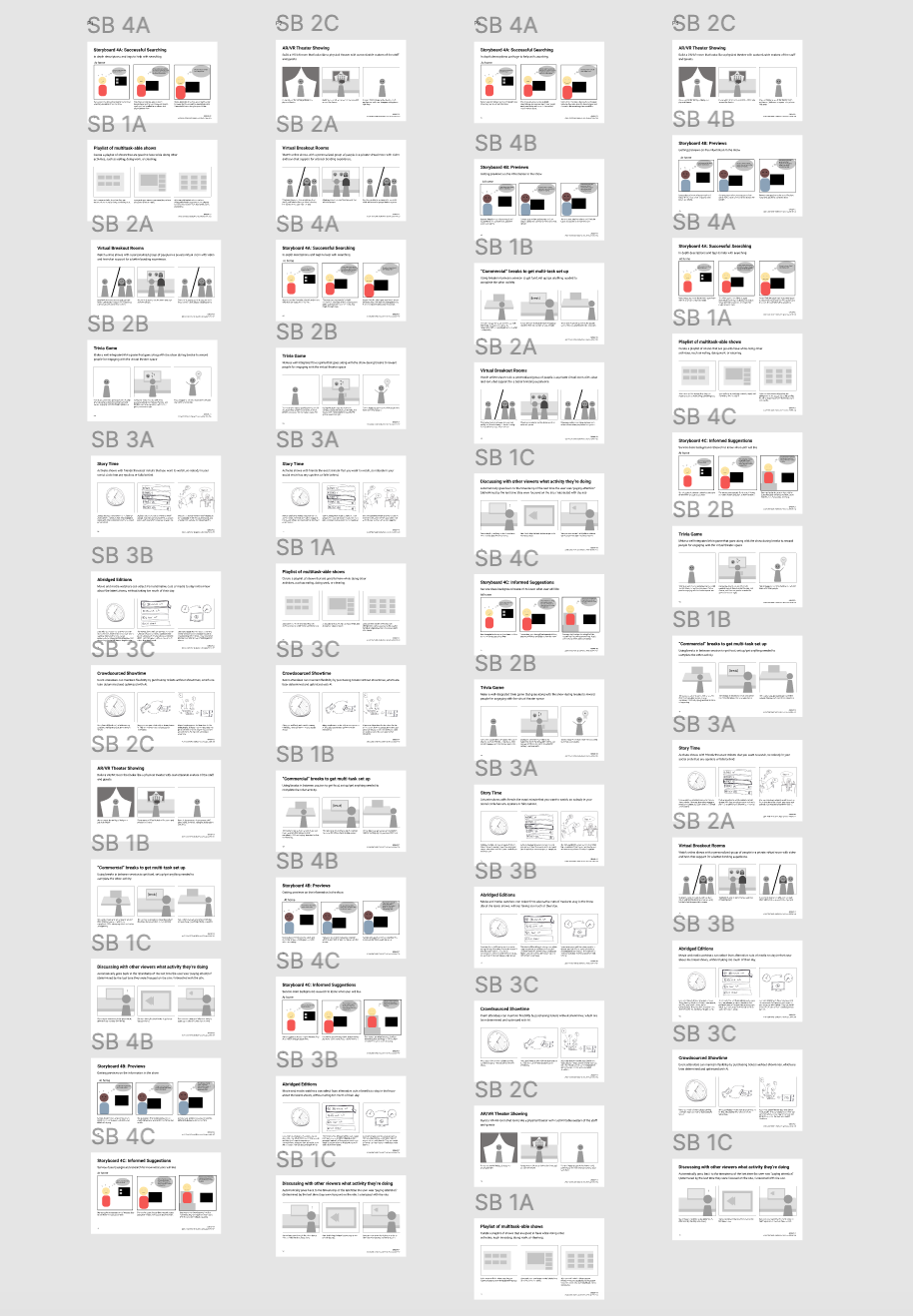
Ranking of ideas for each participant
Experience Prototyping
In our meeting after conducting the speed dating sessions, each group member had a few minutes to speak about how their session went and what insights came up with their participants. Ones everyone shared notes from the sessions, each member of the team voted on 2 or 3 storyboards that combined our research goal with our personal interests. Every member of the team felt that the Trivia Game storyboard was both well-received in our speed dating sessions and was a good fit for our research goal.
For the first round of user testing, we used the Wizard of OZ technique with a mid-fi prototype, because we wanted to let the users have the actual experience of watching a video instead of looking at a blank screen to get more precise feedback about our idea.
Our second round of user testing, we went back to a lower fidelity version because we wanted to explore options beyond what currently exists. We also wanted to make sure that our core idea of a trivia game is well-tested while not leading participants astray to thinking we must commit to the Zoom & Kahoot idea.
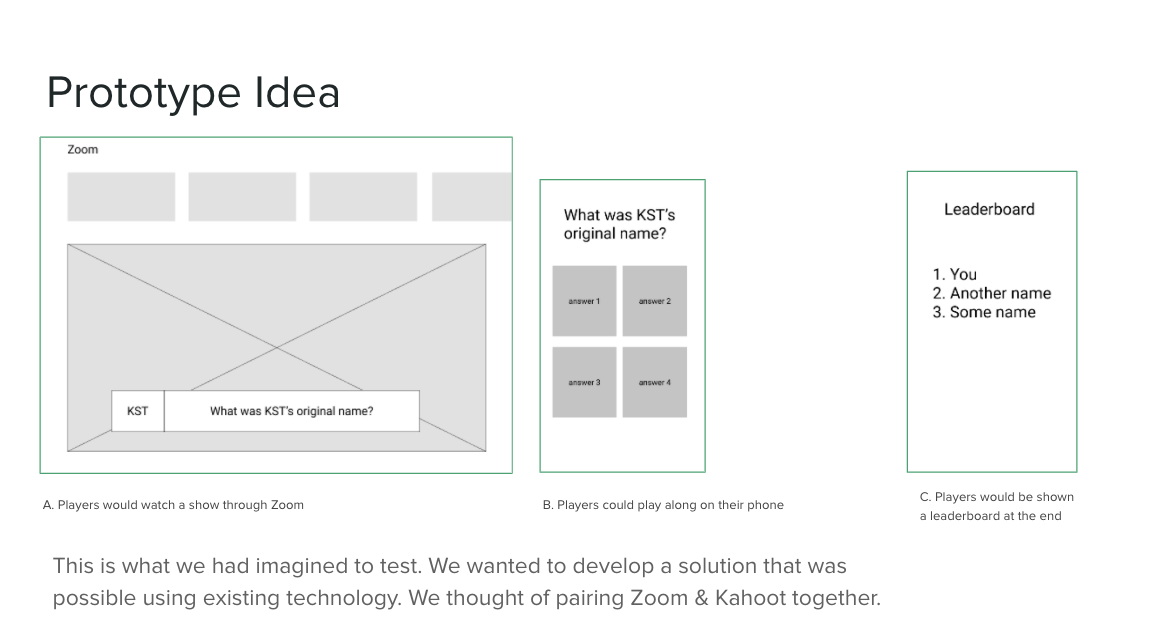
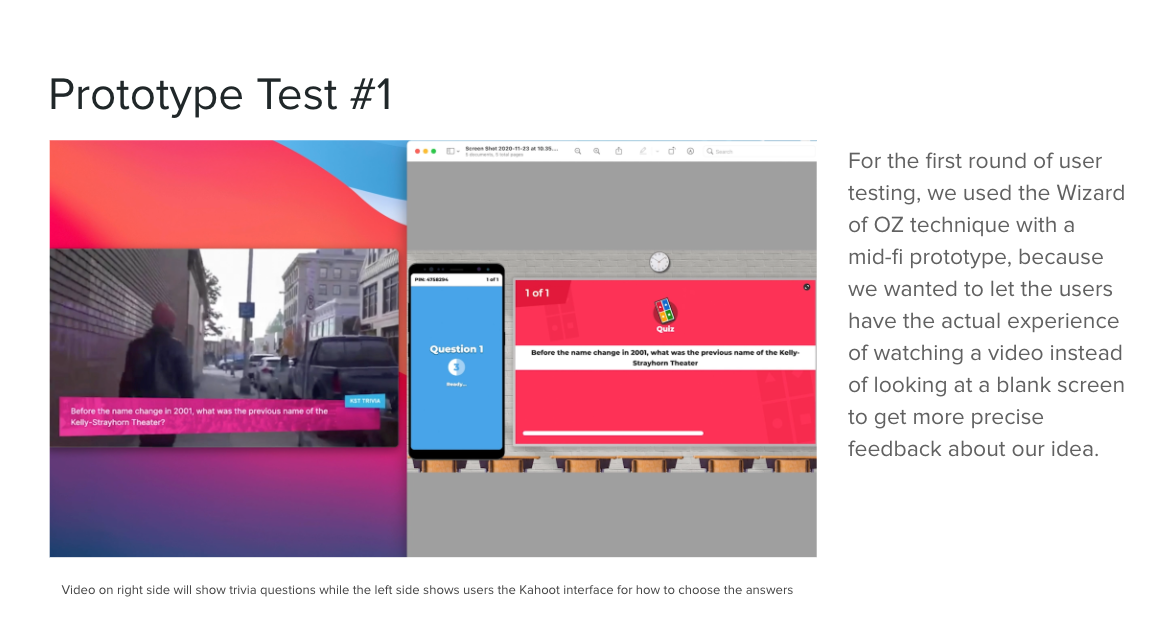


Results
Before presenting to clients, we changed our idea of a trivia game into more of a fun presentation. We displayed text over a KST videos that contained tidbits about the theater and what the performance means. We got rid of our mobile portion, too because we found that users would be distracted by two screens.
Instead of going wild with design ideas, we scaled back and made our solution economical and practical for a theater on a budget and in the midst of dealing with the pandemic. During the presentation, we gave our pitch and hosted a Q&A session with the client. We also prepared other faster and cheaper option- a prototype for our prototype if our clients wanted to test our idea further. We suggested that if they do not have time to build it out, they could use YouTube's subtitle service as a lo-fi option to our prototype.
Reflection
Due to the quick pace and nature of class over just one semester, our group had to recruit fast. This often meant convenience sampling and recruiting friends rather than the people who actually engage with the local theater. I wish we had more time to get insights from people who lived in Pittsburgh and are regulars at the theater.
Despite some worries about the methods and recruitment in this research problem, I had a great time working with my team and project managing the deadlines. I learned a lot about moving in a fast-paced environment and making decisions on quality research. I look forward to continue working in this field. (And watching people go along their day with consent!)
